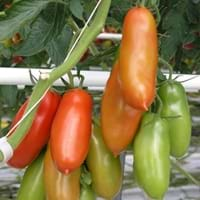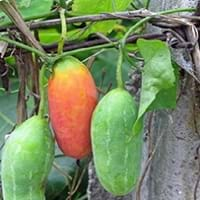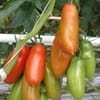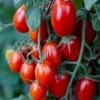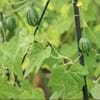Life Span
Perennial
Annual
Origin
Mexico, Central America, South America
India, Philippines, Southeast Asia
Types
Round tomatoes, Cluster tomatoes, Heirloom tomatoes, Roma tomatoes
Not Available
Habitat
Temperate Regions
Loamy soils, Moist Soils, Subtropical climates
USDA Hardiness Zone
11-15
5-7
Sunset Zone
A1, A2, A3, H1, H2, 1a, 1b, 2a, 2b, 3a, 3b, 4, 5, 6, 7, 8, 9, 10, 11, 12, 13, 14, 15, 16, 17, 18, 19, 20, 21, 22, 23, 24
A1, A2, A3, H1, H2, 1a, 1b, 2a, 2b, 3a, 3b, 4, 5, 6, 7, 8, 9, 10, 11, 12, 13, 14, 15, 16, 17, 18, 19, 20, 21, 22, 23, 24
Habit
Vining/Climbing
Vining/Climbing
Flower Color
Yellow
Yellow, Orange, Dark Green
Flower Color Modifier
Bicolor
Bicolor
Fruit Color
Red, Orange Red
Yellow, Dark Green
Leaf Color in Spring
Green, Dark Green
Green, Dark Green
Leaf Color in Summer
Green, Dark Green
Green, Dark Green
Leaf Color in Fall
Green, Dark Green
Green, Dark Green
Leaf Color in Winter
Green, Dark Green
Not Available
Plant Season
Spring, Summer, Fall
Summer, Fall
Sunlight
Full Sun
Full Sun
Growth Rate
Fast
Very Fast
Type of Soil
Loam, Sand
Loam, Sand
The pH of Soil
Neutral
Neutral
Soil Drainage
Well drained
Well drained
Bloom Time
Indeterminate
Indeterminate
Tolerances
Drought
Drought
Where to Plant?
Container, Ground
Ground
How to Plant?
Rooted stem cutting, Seedlings
Seedlings
Plant Maintenance
Medium
Medium
Watering Requirements
Average Water Needs, Requires regular watering
Requires regular watering, Water daily during growing season
In Summer
Lots of watering
Lots of watering
In Spring
Moderate
Moderate
In Winter
Average Water
Average Water
Soil Type
Loam, Sand
Loam, Sand
Soil Drainage Capacity
Well drained
Well drained
Sun Exposure
Full Sun
Full Sun
Pruning
Remove damaged leaves, Remove dead branches, Remove dead leaves
Cut out old flower stalks, Prune after flowering, Remove crossing or rubbing branches, Remove dead or diseased plant parts
Fertilizers
All-Purpose Liquid Fertilizer
Apply 10-10-10 amount, Apply 12-12-12 amounts, Phosphate
Pests and Diseases
Beetles, Worms
Aphids, Army-worms, Bacteria wilt, Bacterial leaf spot, Blight, Cucumber beetles, Cutworms, Fusarium leaf spot, Red spider mite
Plant Tolerance
Drought, Heat And Humidity
Drought, Full Sun, Salt and Soil Compaction
Flower Petal Number
Single
Single
Fragrant Bark/Stem
Yes
No
Foliage Texture
Medium
Coarse
Foliage Sheen
Matte
Matte
Attracts
Beetles, Butterflies
Bees, Flies, Flying insects
Allergy
allergic reaction
Hypoglycaemic Coma, Irregular Heart Rhythm, Miscarriage
Aesthetic Uses
Not Used For Aesthetic Purpose
Not Used For Aesthetic Purpose
Beauty Benefits
Not Available
Anti-ageing, For treating wrinkles, Nourishes scalp, Remove blemishes
Environmental Uses
Air purification
Food for animals
Medicinal Uses
Cardiovascular problems, Detoxification, Liver problems, osteoporosis
Anti-fungal, Diabetes, Fever, Gastrointestinal disorders, Jaundice, Leprosy, Scabies, Weight loss
Part of Plant Used
Fruits
Fruits
Other Uses
Used As Food, Used for its medicinal properties
Cosmetics, Repellent, Use in Chinese herbology
Used As Indoor Plant
Yes
No
Used As Outdoor Plant
Yes
Yes
Garden Design
Container, Edible, Herb, Vegetable, Vine
Dried Flower/Everlasting, Vine
Botanical Name
LYCOPERSICON esculentum 'San Marzano Redorta'
Coccinia grandis
Common Name
Plum Tomato, Tomato
baby watermelon, little gourd, tindora, tendli
In Hindi
बेर टमाटर
तेंडली, कुंदुरी
In German
Eiertomate
Tindola,
Efeu Kürbis
In French
Plum Tomato
Ivy gourd
In Spanish
Tomate ciruela
Ivy gourd
In Greek
Plum ντομάτα
Ivy gourd
In Portuguese
tomate ameixa
Ivy gourd
In Polish
Plum Tomato
Ivy gourd
In Latin
Augue Nullam consectetur
Ivy gourd
Phylum
Magnoliophyta
Magnoliophyta
Class
Magnoliopsida
Magnoliopsida
Order
Solanales
Cucurbitales
Family
Solanaceae
Cucurbitaceae
Clade
Angiosperms, Asterids, Eudicots
Angiosperms, Eudicots, Rosids
Tribe
Not Available
Not Available
Subfamily
Not Available
Papilionoideae
Number of Species
Not Available
Season and Care of San Marzano Tomato and Ivy Gourd
Season and care of San Marzano Tomato and Ivy Gourd is important to know. While considering everything about San Marzano Tomato and Ivy Gourd Care, growing season is an essential factor. San Marzano Tomato season is Spring, Summer and Fall and Ivy Gourd season is Spring, Summer and Fall. The type of soil for San Marzano Tomato is Loam, Sand and for Ivy Gourd is Loam, Sand while the PH of soil for San Marzano Tomato is Neutral and for Ivy Gourd is Neutral.
San Marzano Tomato and Ivy Gourd Physical Information
San Marzano Tomato and Ivy Gourd physical information is very important for comparison. San Marzano Tomato height is 180.00 cm and width 90.00 cm whereas Ivy Gourd height is 60.00 cm and width 90.00 cm. The color specification of San Marzano Tomato and Ivy Gourd are as follows:
San Marzano Tomato flower color: Yellow
San Marzano Tomato leaf color: Green and Dark Green
Ivy Gourd flower color: Yellow, Orange and Dark Green
- Ivy Gourd leaf color: Green, Dark Green
Care of San Marzano Tomato and Ivy Gourd
Care of San Marzano Tomato and Ivy Gourd include pruning, fertilizers, watering etc. San Marzano Tomato pruning is done Remove damaged leaves, Remove dead branches and Remove dead leaves and Ivy Gourd pruning is done Cut out old flower stalks, Prune after flowering, Remove crossing or rubbing branches and Remove dead or diseased plant parts. In summer San Marzano Tomato needs Lots of watering and in winter, it needs Average Water. Whereas, in summer Ivy Gourd needs Lots of watering and in winter, it needs Average Water.
